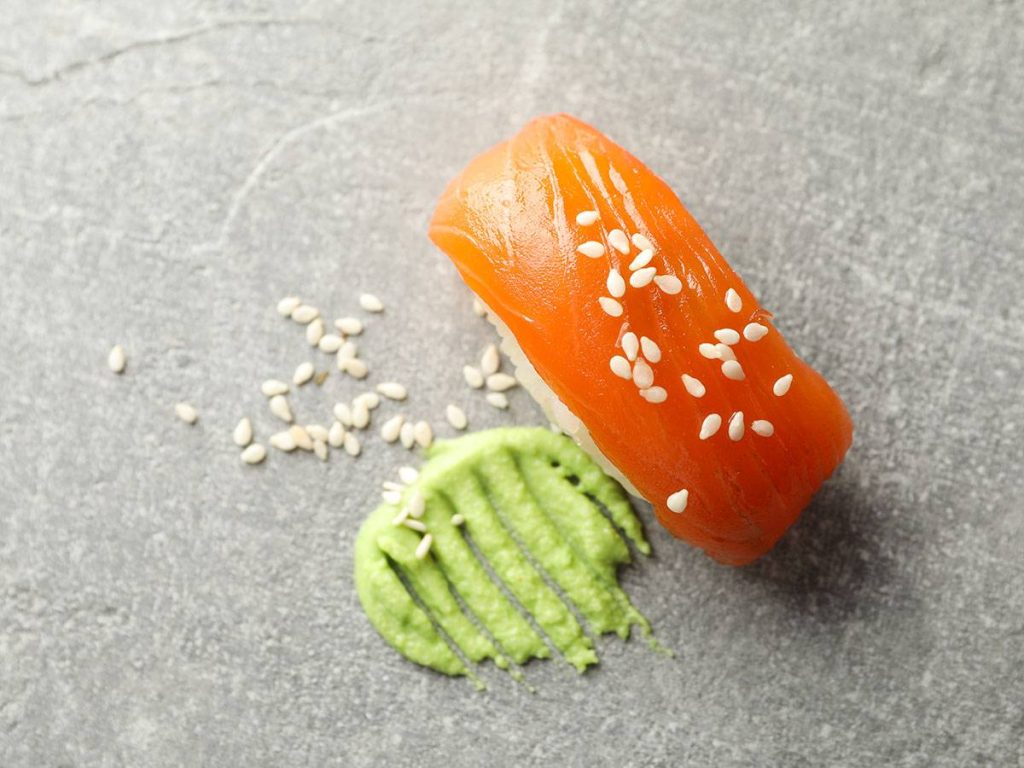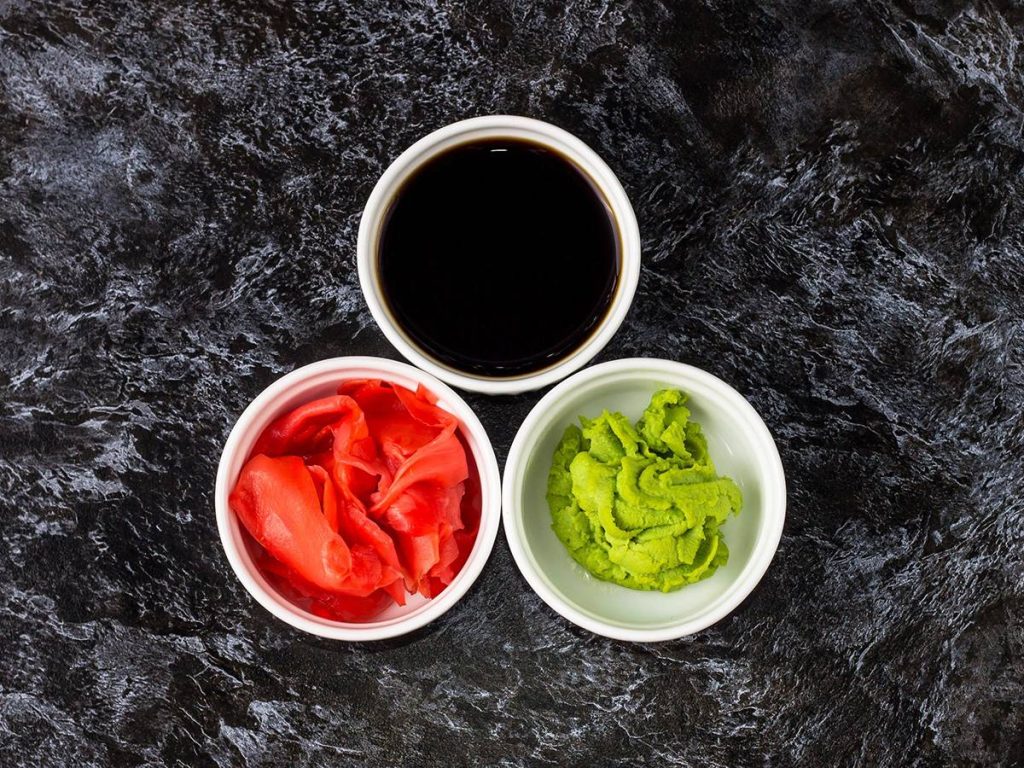When it comes to sushi, there’s one ingredient that packs a punch and adds an unmistakable kick to every bite.
It’s wasabi sauce.
This fiery green condiment, often served alongside sushi, is known for its unique flavor and ability to awaken the senses. Let’s discover its origins, distinctive characteristics, and proper way to enjoy this beloved Japanese culinary gem.
Wasabi, scientifically known as Wasabia japonica, is a plant native to Japan. It belongs to the Brassicaceae family, which includes other pungent members like horseradish and mustard. The roots of the wasabi plant are the part used to create the popular condiment. Traditionally, these roots are grated into a paste form and consumed alongside sushi and sashimi.
Wasabi is renowned for its potent flavor and distinctive aroma. When consumed, it provides a fiery heat that quickly envelops the palate, delivering a uniquely pungent and spicy experience. The flavor profile of wasabi can be described as sharp, earthy, and slightly sweet, with hints of horseradish. Its aromatic compounds are released when the plant is grated, intensifying the overall sensory experience.

The Art of Wasabi Application
To fully appreciate the flavor of wasabi, it is important to understand the proper way to apply it to sushi. In traditional Japanese sushi etiquette, a small amount of wasabi is already placed by the sushi chef between the fish and the rice. However, if you prefer more heat, you can add another dab of wasabi to your sushi before indulging. Gently mix the wasabi into soy sauce to create a dipping sauce that complements the sushi rolls.
Contrary to popular belief, the green paste commonly found in many sushi restaurants is often a mixture of horseradish, mustard, and food coloring.
In fact, authentic wasabi, made from fresh grated wasabi root, is rare and considered a luxury because of its delicate growing conditions and short shelf life. However, some high-end sushi establishments take pride in serving the real deal, so keep an eye out for the opportunity to savor genuine wasabi.

Health Benefits and Culinary Uses
Beyond its fiery flavor, wasabi offers several health benefits. It possesses antimicrobial properties and contains compounds that may have anti-inflammatory and antioxidant effects. Furthermore, the spiciness of wasabi can aid digestion and awaken the taste buds, enhancing the overall dining experience. Wasabi is not only limited to sushi; it can also be used in various culinary creations, such as dressings, marinades, and even in fusion dishes for a unique twist.
Wasabi, the fiery green condiment of sushi, adds an exhilarating element to the culinary world. From its origins in Japan to its unmistakable flavor and aroma, wasabi has captivated the taste buds of sushi lovers worldwide. Whether you’re enjoying the milder imitations, or authentic grated wasabi, this condiment brings a remarkable sensory experience to every sushi feast. So, the next time you indulge in sushi, embrace the fiery delight of wasabi and allow your taste buds to embark on a spicy adventure that complements the artful flavors of this beloved Japanese cuisine.
